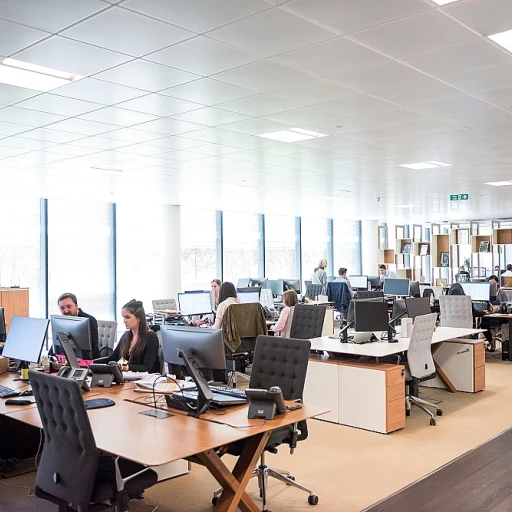
Understanding Micromanagement
Understanding the Dynamics of Micromanagement
Micromanagement often arises when leaders feel the need to maintain tight control over their team members. This management style stems from a lack of trust and often leads to an environment where employees feel constrained. While leaders may believe that excessive control ensures precision and high performance, the effects of micromanagement can be quite the opposite, potentially stifling creativity and innovation. In environments where micromanagement predominates, employees often experience a sense of fear and reduced autonomy. This distrust can culminate in a stifling atmosphere, one where creativity growth is hindered and employees shy away from taking initiative. The assumption of micromanagers is that without constant oversight, the team will not meet expectations. However, this approach creates high turnover rates as employees seek workplaces where they can thrive without constant scrutiny. Open communication is essential in cultivating a work environment that promotes creativity and growth. Micromanagement stifles these essential elements by leaving little room for healthy dialogue and collaboration among team members. The excessive demands for check-ins and adherence to procedures can lead to frustration, ultimately impacting team satisfaction and development. Building trust and fostering a sustainable work environment requires a shift in leadership perspective. Transitioning from a short-term to a long-term mindset enables leaders to delegate tasks effectively and empower employees to make decisions. Through this, management can strike a balance between oversight and innovation, leading to tangible improvements in employee satisfaction and organizational success. For more insights into refining leadership strategies and enhancing growth, consider exploring https://www.employee-experience-trends.com/blog/elevating-employee-experience-through-upward-management, which offers valuable perspectives on boosting the employee experience.The Impact on Creativity
The Creative Impact of Micromanagement
Micromanagement can have a profound impact on creativity within the team. This management style, characterized by excessive control and lack of trust, stifles creativity and hinders the natural flow of innovative ideas in an organization. When employees feel they are constantly being watched and controlled, they may hesitate to offer fresh perspectives or novel solutions. This is because fear of making mistakes or facing criticism can severely limit their willingness to take risks and experiment. Moreover, this oppressive environment doesn't foster an open communication culture, which is crucial for creativity growth. Employees need to feel that their voices are heard and that their contributions are valued. Without this, they may become disengaged and less motivated to share ideas that could lead to significant innovation. Micromanagement also affects the autonomy of team members, a key component for fostering creativity. By focusing too much on short-term deliverables, micromanagers often miss the bigger picture of long-term innovation. Emphasizing results over process can discourage employees from exploring creative solutions that do not yield immediate outcomes. Understanding these dynamics is essential for any leader aiming to promote an innovative environment. To delve further into how effective team dynamics can support creativity, you might consider exploring what makes an exceptional team player, as this can offer deeper insights into fostering an environment conducive to creativity and innovation.Growth and Development Challenges
Growth and Development Dilemmas
Micromanagement poses significant challenges to the growth and development of both employees and organizations. When managers exert excessive control, it stifles creativity and innovation, ultimately limiting opportunities for professional advancement. This management style, characterized by a lack of trust and unnecessary oversight, creates an environment fraught with fear and uncertainty, further hindering the growth potential of team members.
In an environment where leaders constantly second-guess and scrutinize every decision their employees make, the natural response is often a hesitance to take risks or propose new ideas. Consequently, this stifles creativity growth, preventing employees from thriving and excelling in their roles. The effects of micromanagement, including curtailed autonomy, can be detrimental not only in the short term but have lasting implications on the workforce's morale and productivity. High turnover rates are a common symptom within such work environments, where creativity and innovation are not encouraged or respected.
Moreover, micromanagement hinders a team's ability to engage in effective decision-making. Team members who operate under excessive oversight may become reliant on their manager's approval, undermining their confidence and problem-solving skills. In the long term, this dependency on the manager's decisions can lead to a significant decrease in employee satisfaction and an increase in potential turnover.
To foster a vibrant work environment where employees feel valued and respected, engaging team members in strategic planning is essential. When employees are included in the planning process, there's a reduction in micromanagement, empowering them to contribute their perspectives and insights. This inclusion boosts morale, enhances trust, and sets the stage for a more innovative and growth-driven organization.
Employee Experience and Satisfaction
Effects on Employee Satisfaction in the Workplace
The impact of micromanagement on employee experience and satisfaction is significant. When leaders excessively control and stifle their team, it can lead to a stifling environment where employees feel undervalued and disempowered. This impacts not only their creativity but also their overall job satisfaction. In a work environment where micromanagement prevails, employees often experience a lack of trust from their superiors. This absence of trust can hinder open communication, leading to an atmosphere of fear rather than collaboration. Employees, when faced with a management style that involves excessive oversight, are less likely to innovate and propose new ideas. As creativity is curtailed, both the team's growth and the individual's potential for creativity innovation are compromised. Moreover, the constant check-ins and decision-making interference by managers can derail projects and slow down progress considerably. Over time, this can result in high turnover rates, as employees opt for workplaces that offer greater autonomy and appreciate their input. In stark contrast, leaders who delegate tasks and empower their employees foster an environment conducive to creativity growth and employee wellbeing. Such leadership practices rely on mutual respect and the understanding that team members are capable of making informed decisions. This leads to more satisfied employees who are likely to stay in their roles long term and contribute to a decrease in employee turnover. In conclusion, the detrimental effects of micromanagement on employee satisfaction underscore the importance of fostering a balanced management style. By prioritizing trust and autonomy, organizations can transform their work environments into innovative spaces that both engage and retain talented employees.Strategies for Reducing Micromanagement
Building Trust Through Autonomy and Delegation
Micromanagement often leads to excessive control, negatively affecting the work environment and employee satisfaction. To foster a positive atmosphere where employees feel valued, leaders can shift their management style towards fostering trust and autonomy. By empowering team members to take ownership of their tasks, managers can develop a more dynamic and innovative team.- Trust as a Foundation: Trust is essential in any team environment. Leaders who demonstrate trust in their employees encourage open communication and creativity growth. This allows for a sense of autonomy where employees feel comfortable making decisions without the constant fear of oversight.
- Encouraging Creativity Innovation: Excessive control stifles creativity. By allowing employees the freedom to explore and implement their ideas, creativity innovation flourishes. This leads to more robust solutions and a richer development process.
- Open Communication Channels: Creating an environment where communication is open can significantly reduce the effects of micromanagement. Regular check-ins without the looming presence of micro-control give employees the chance to discuss challenges and achievements, further fostering a positive, creative work environment.
- Delegating Tasks: Delegation is critical in curbing micromanagement. By assigning tasks based on the team's strengths, leaders empower team members and illustrate trust, reducing the pressure on managers and boosting team morale.
Success Stories and Case Studies
Real-world Examples of Mitigating Micromanagement
In some organizations, acknowledging the destructive effects of micromanagement has become the first step towards initiating change. Observing how successful companies have navigated this challenge can offer valuable insights into fostering creativity, innovation, and team growth.
Consider an organization where leadership recognized that excessive control was hindering their teams' output. By shifting their management style towards empowering employees, allowing them autonomy in decision making, they witnessed a significant improvement in their work environment. Team members began to feel valued, contributing to enhanced creativity growth and reduced turnover rates.
Another case revolves around a manager realizing that the constant need for control over projects was not sustainable in the long term. This revelation led to the incorporation of regular check ins and fostering open communication with the team. As a result, employees felt more trusted and engaged, leading to improvements in both creativity and innovation.
Some companies have succeeded by promoting leaders who inherently value trust over control. In these environments, delegating tasks becomes part of the culture, and fear in the workplace is minimized, leading to productive and satisfied employees.
These success stories illustrate that addressing micromanagement is not just about eliminating excessive control, but about creating a balanced environment where team involvement thrives. Organizations benefit from understanding these transformations, recognizing that changes in leadership approaches can eventually spearhead long-term progress and a thriving work environment.













